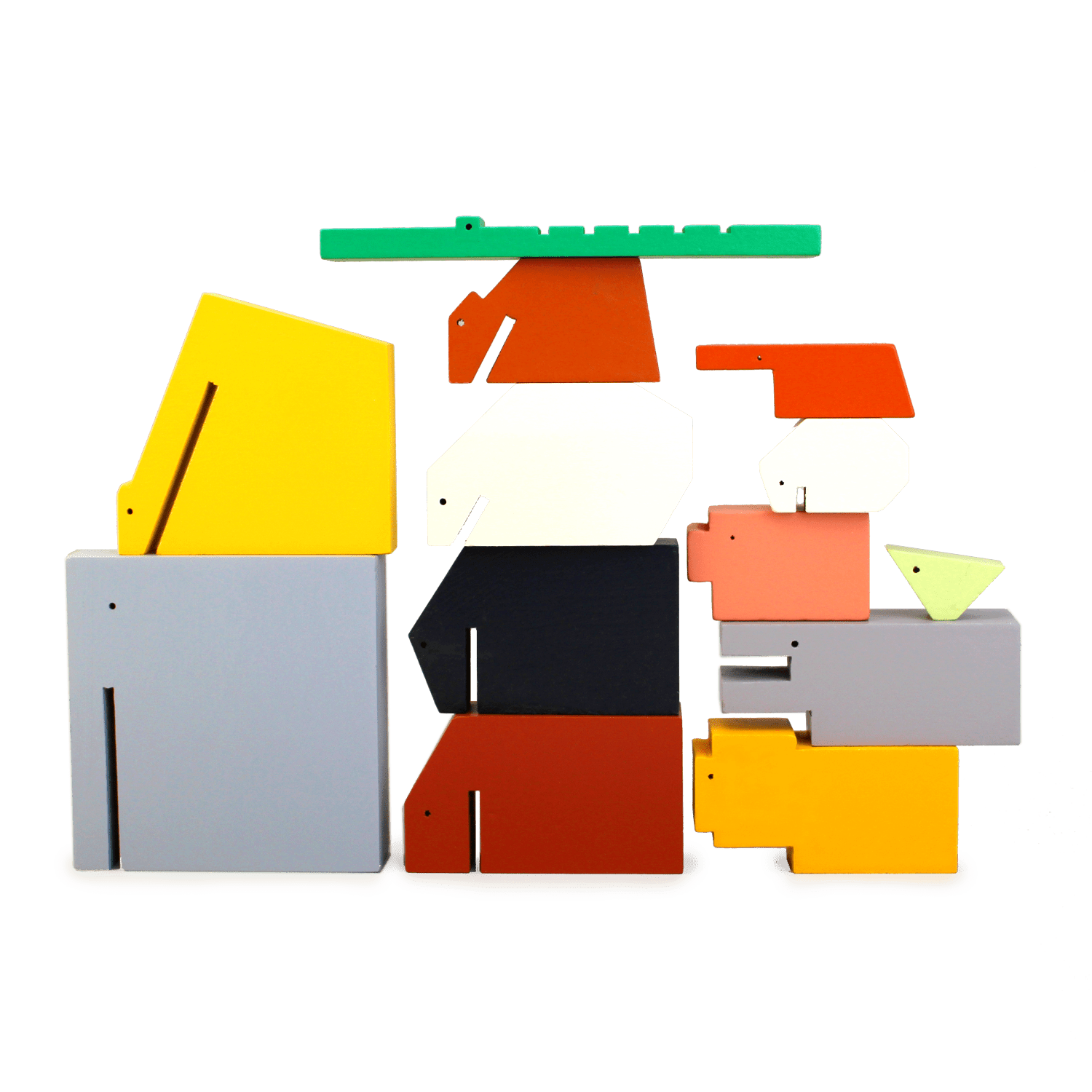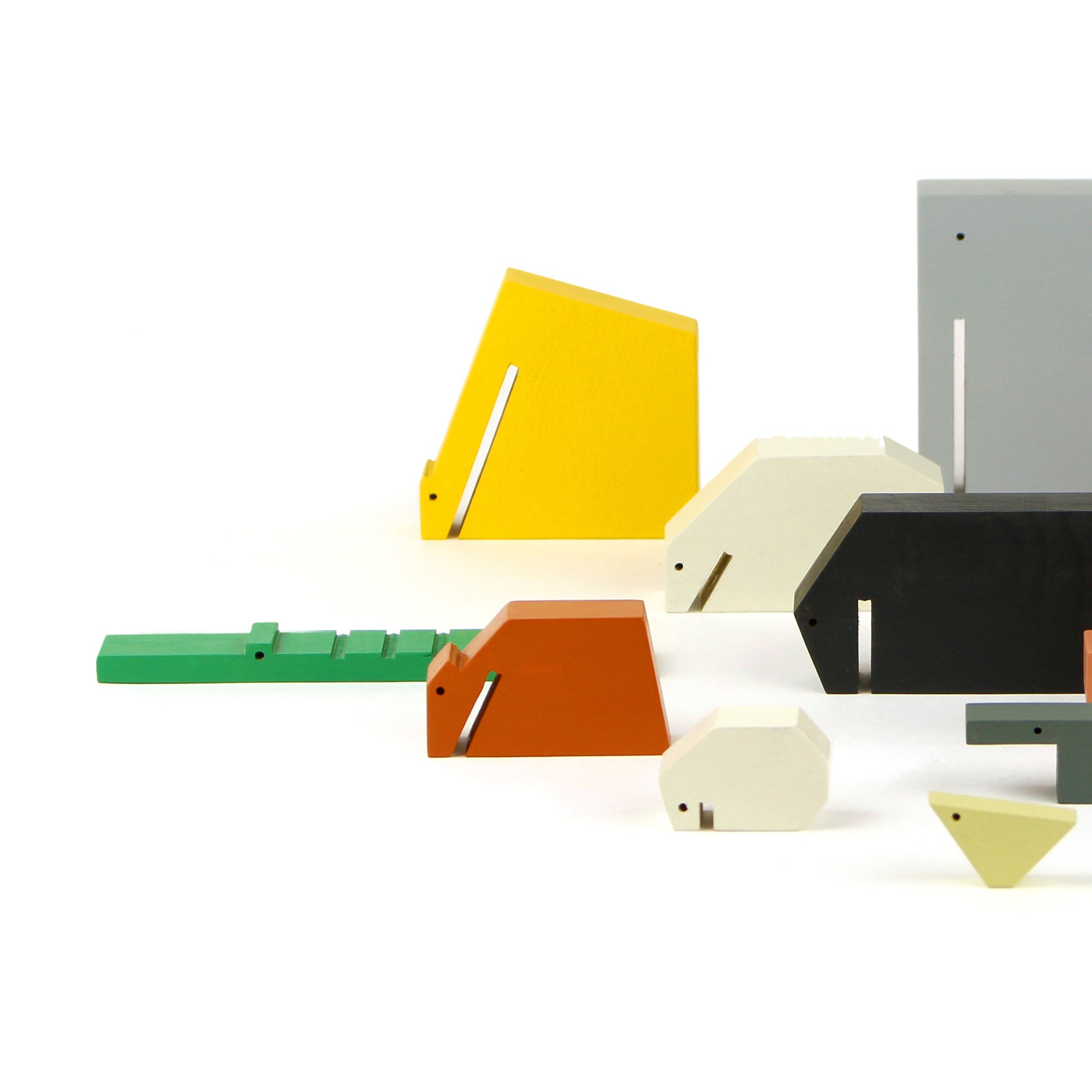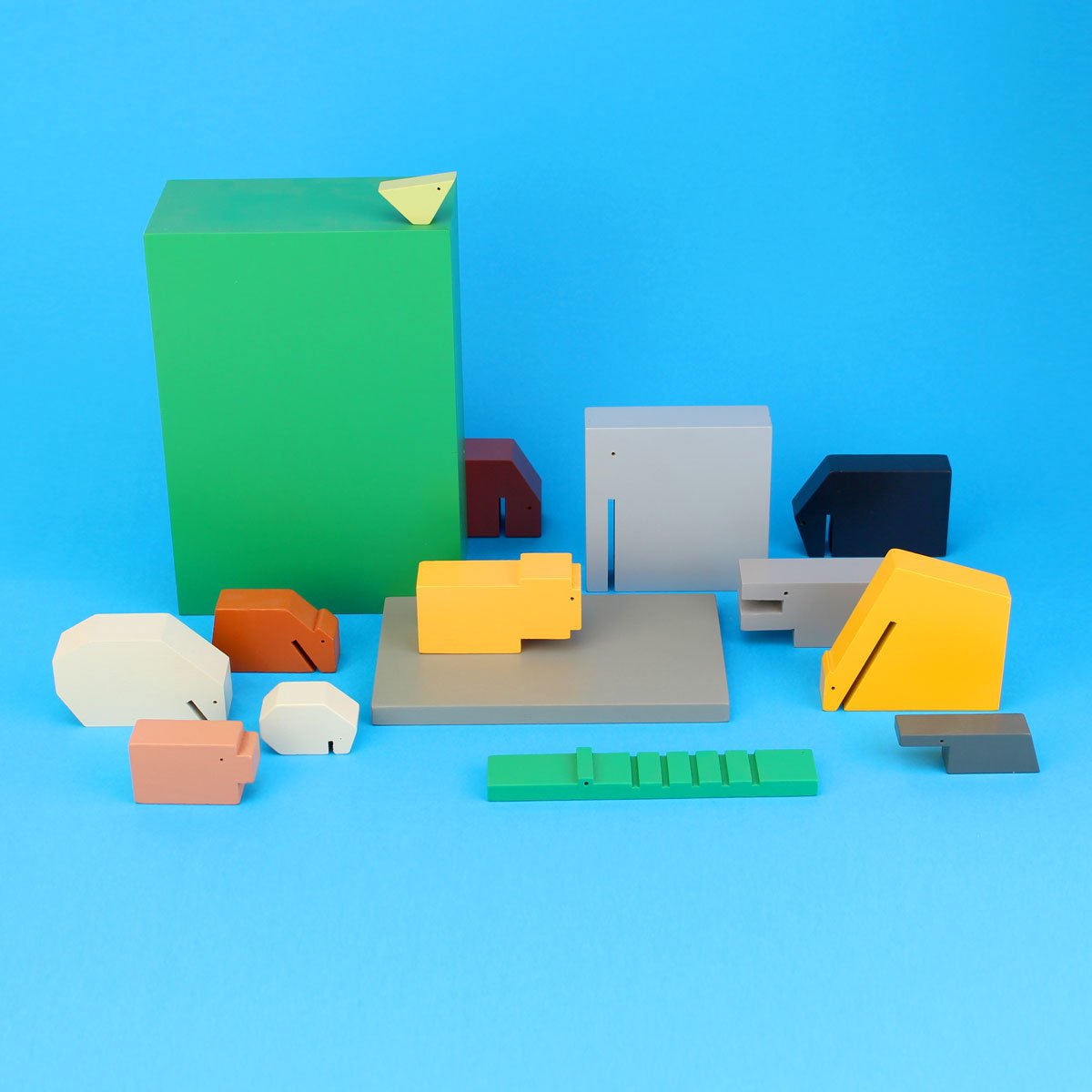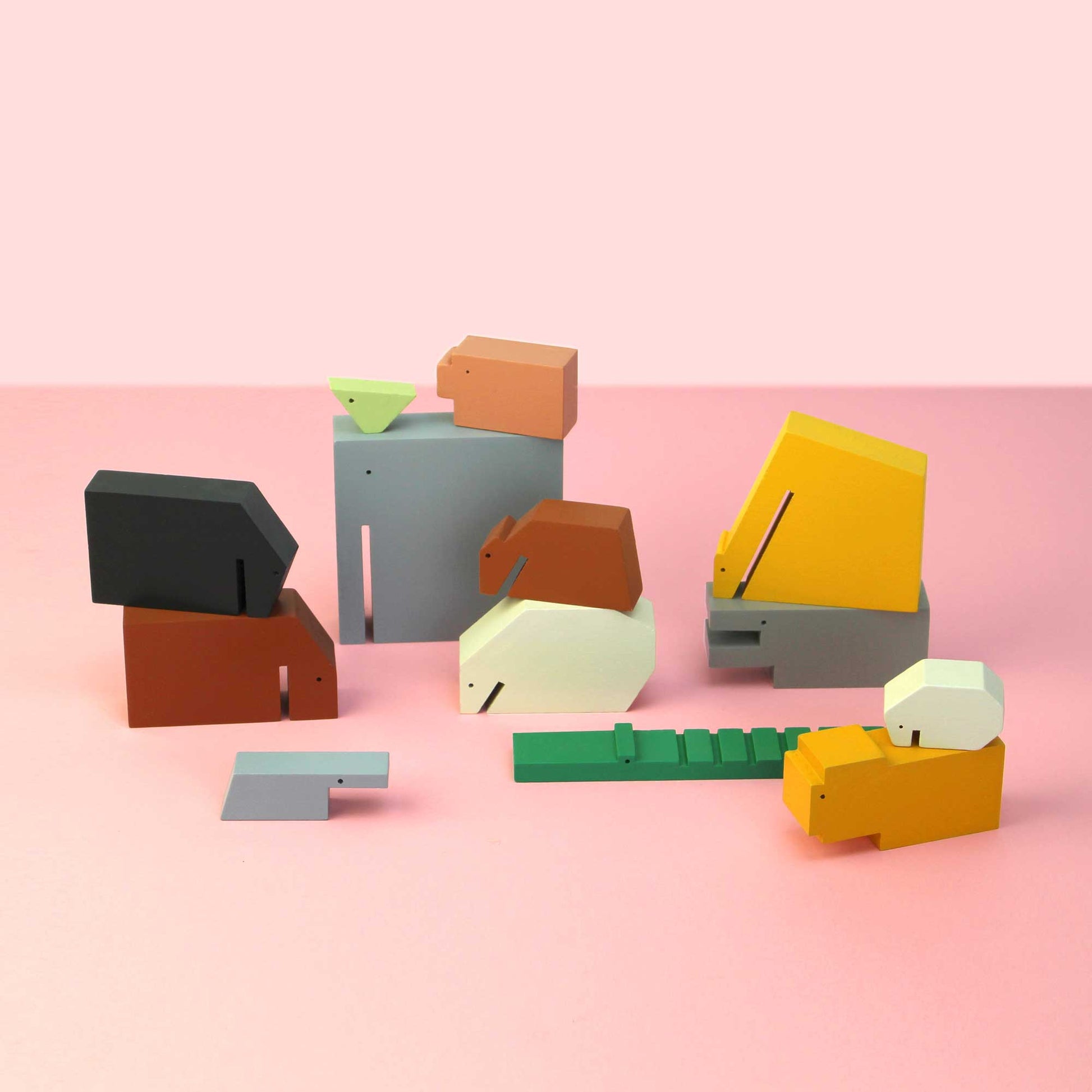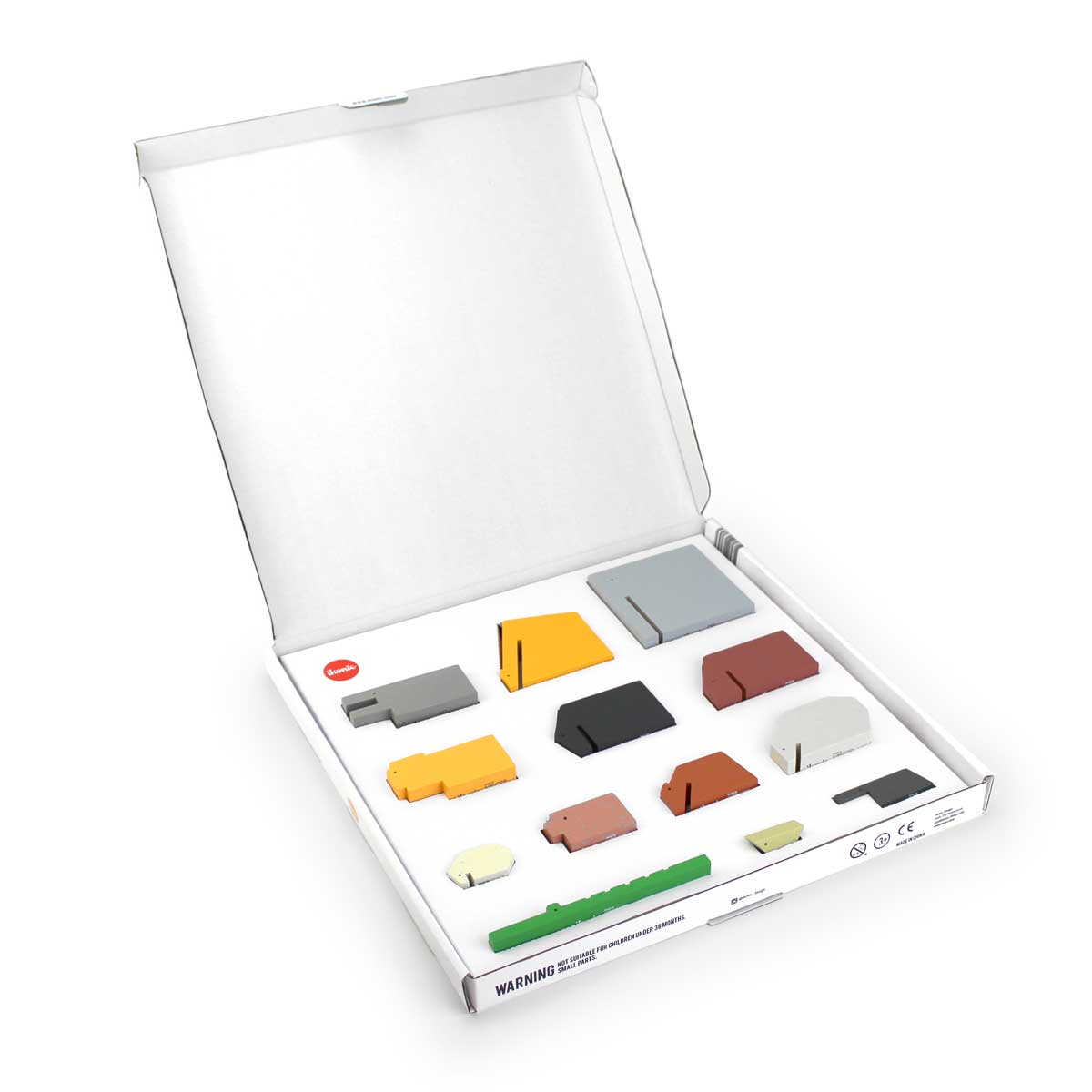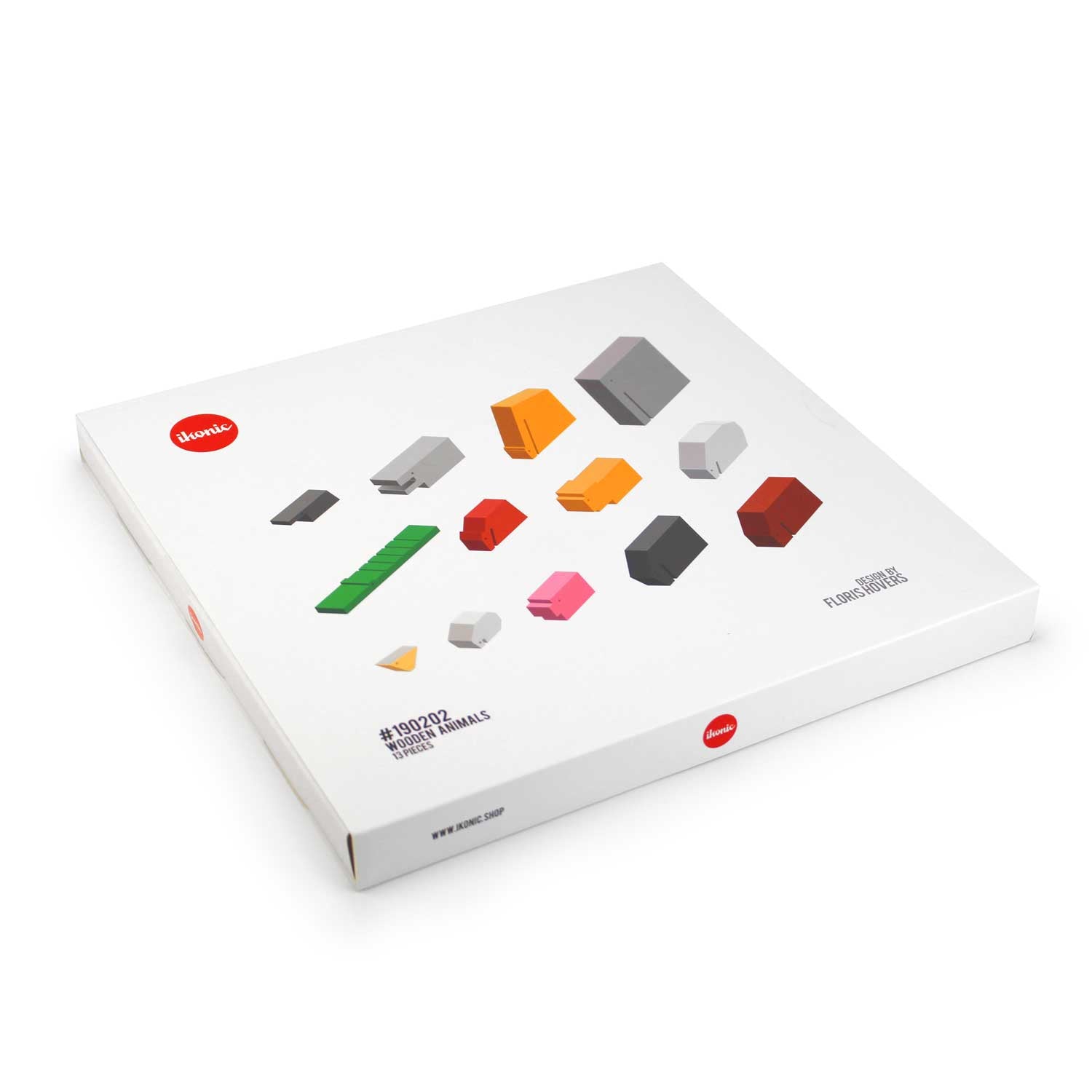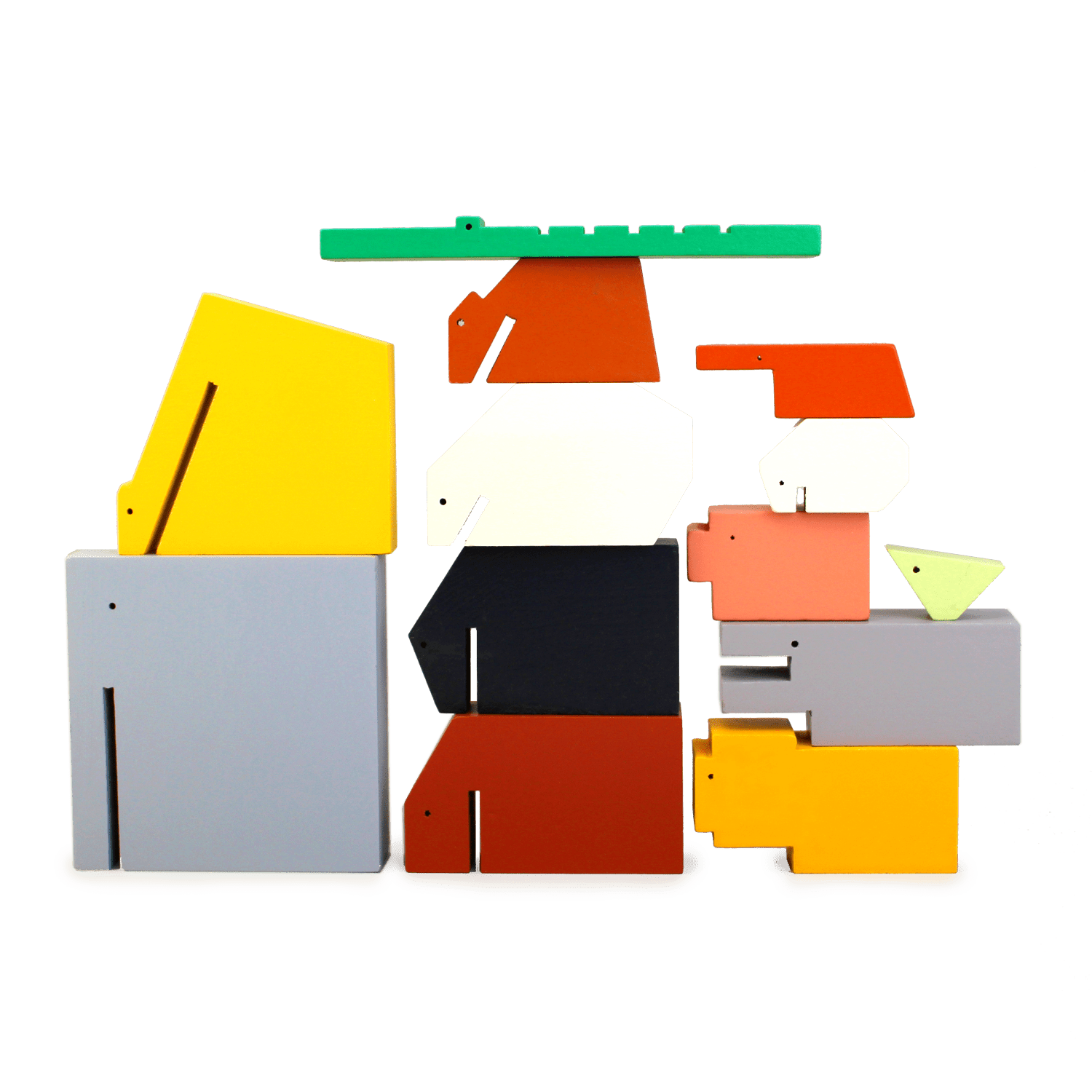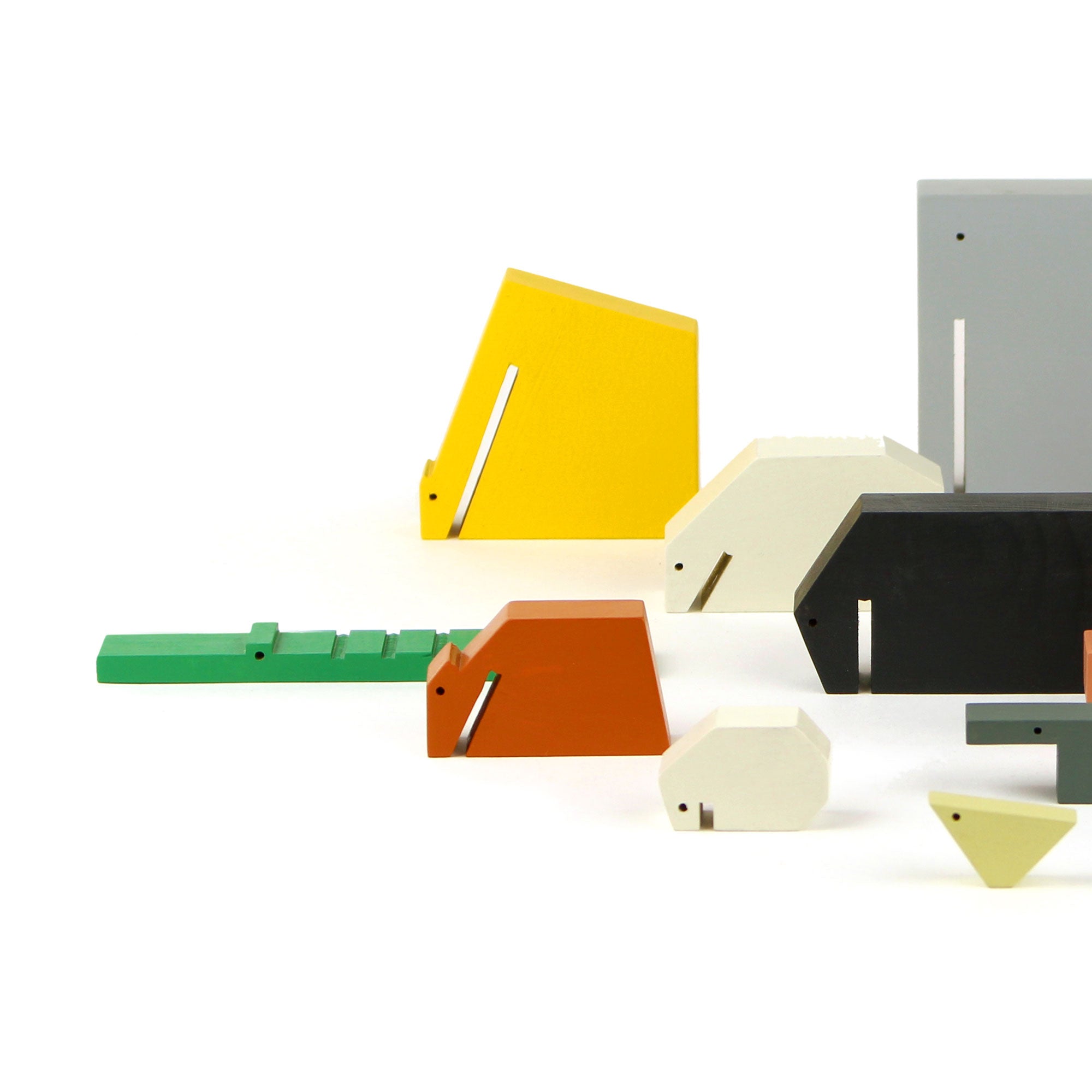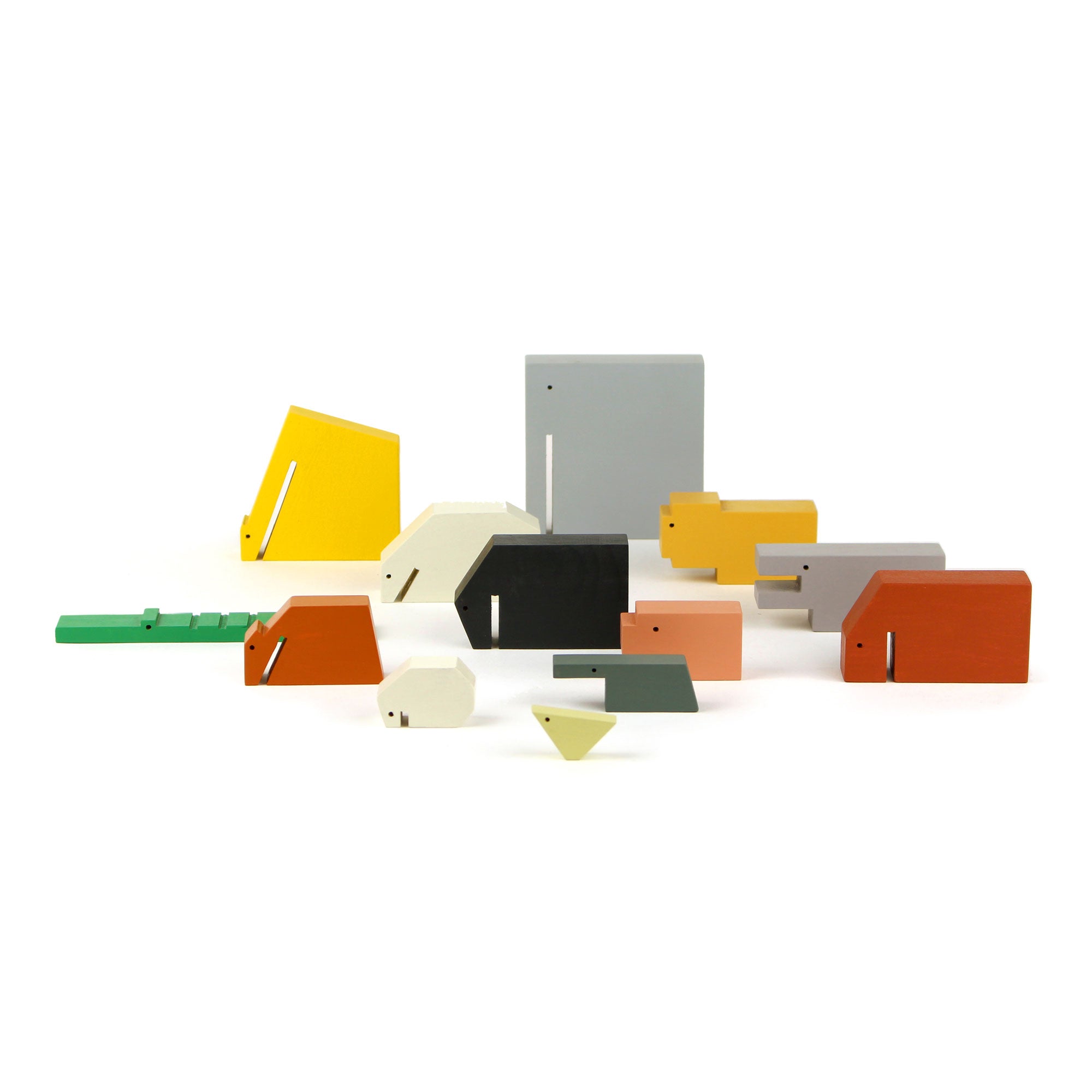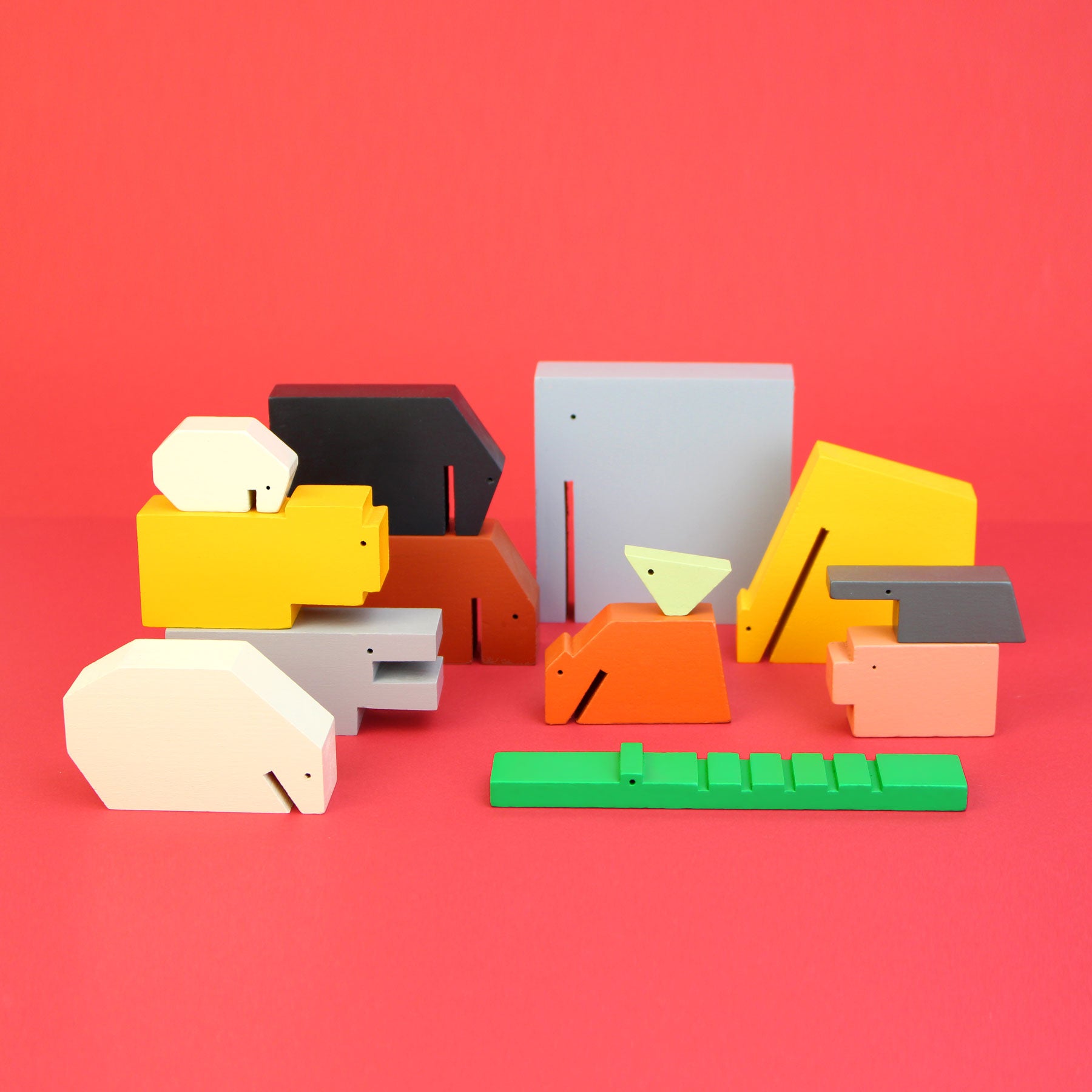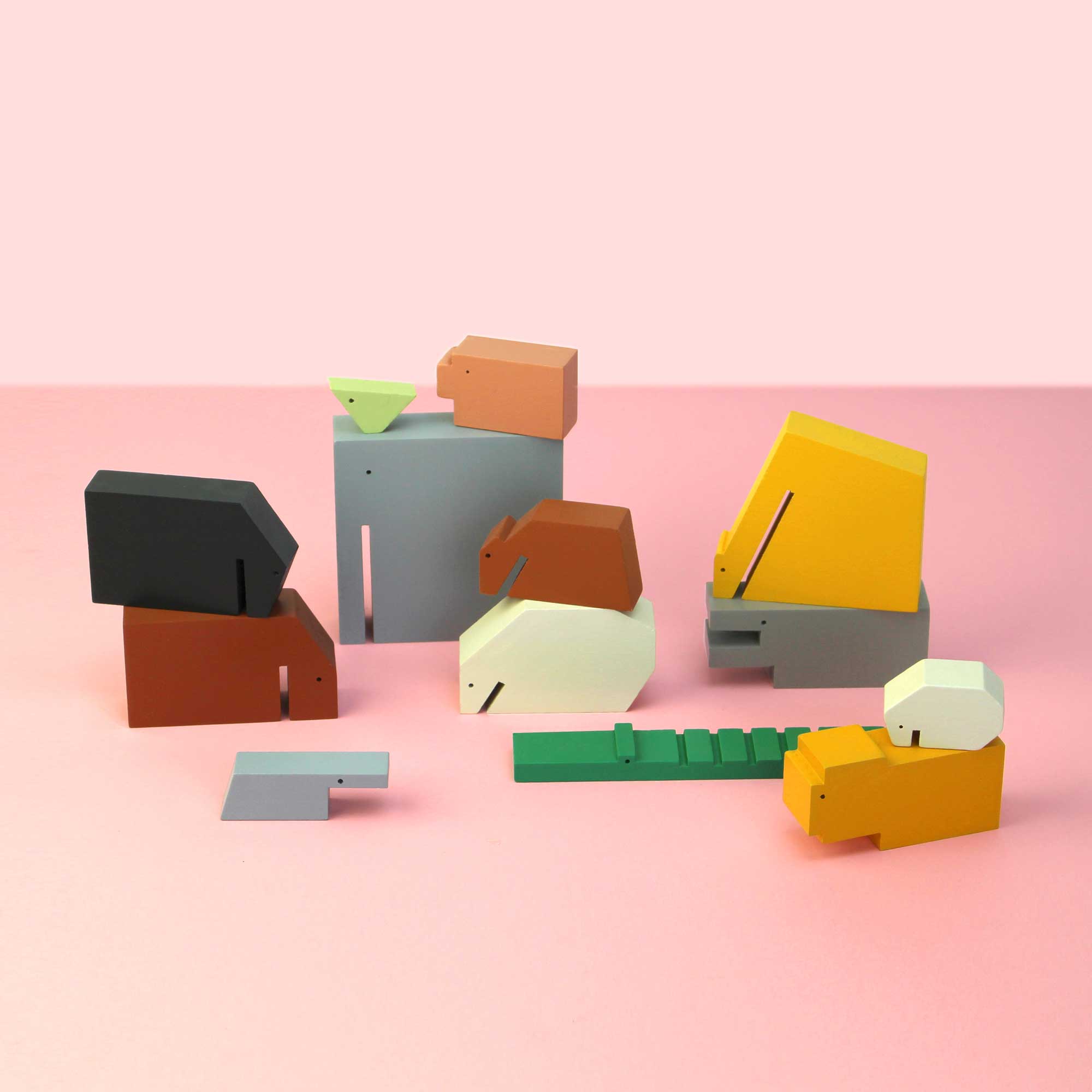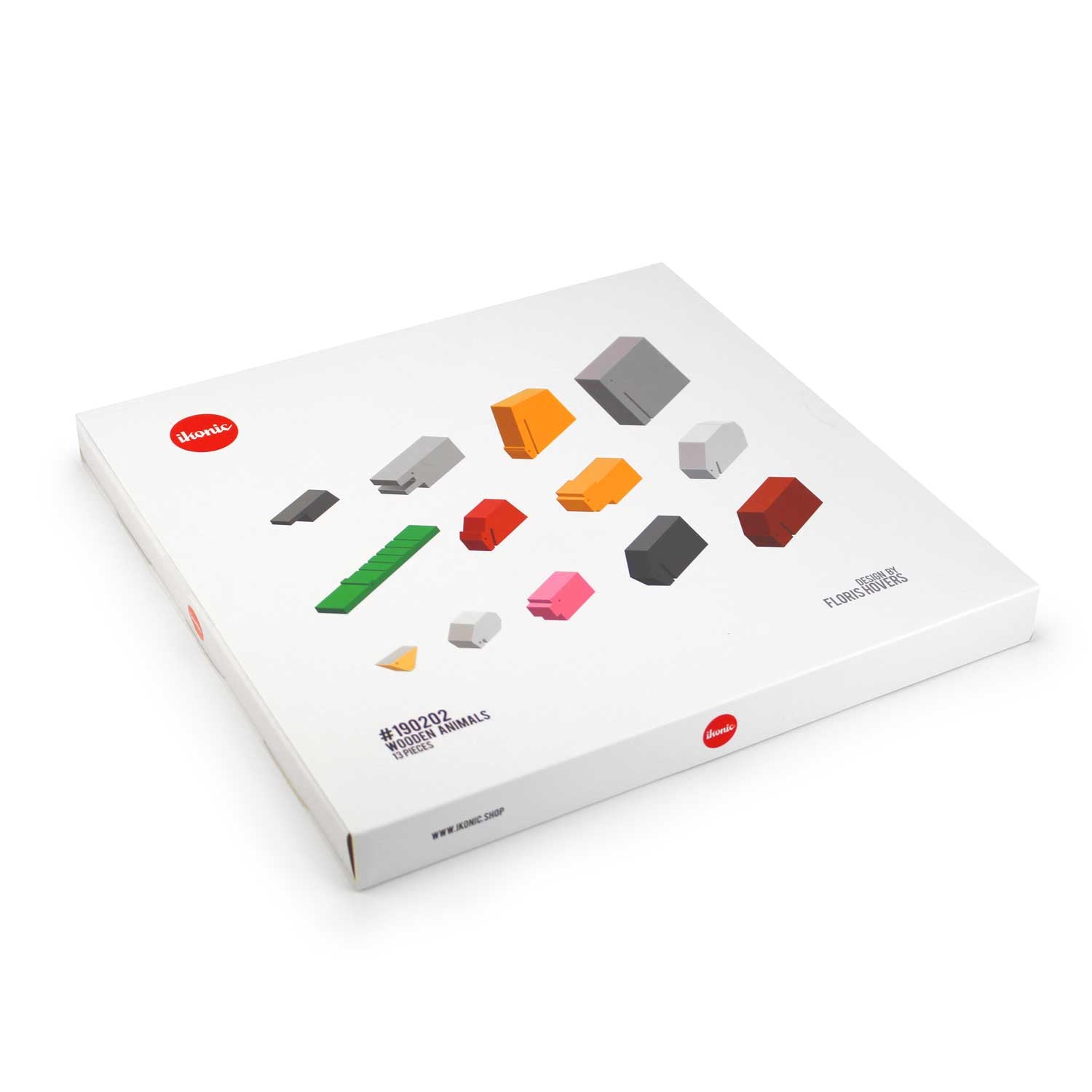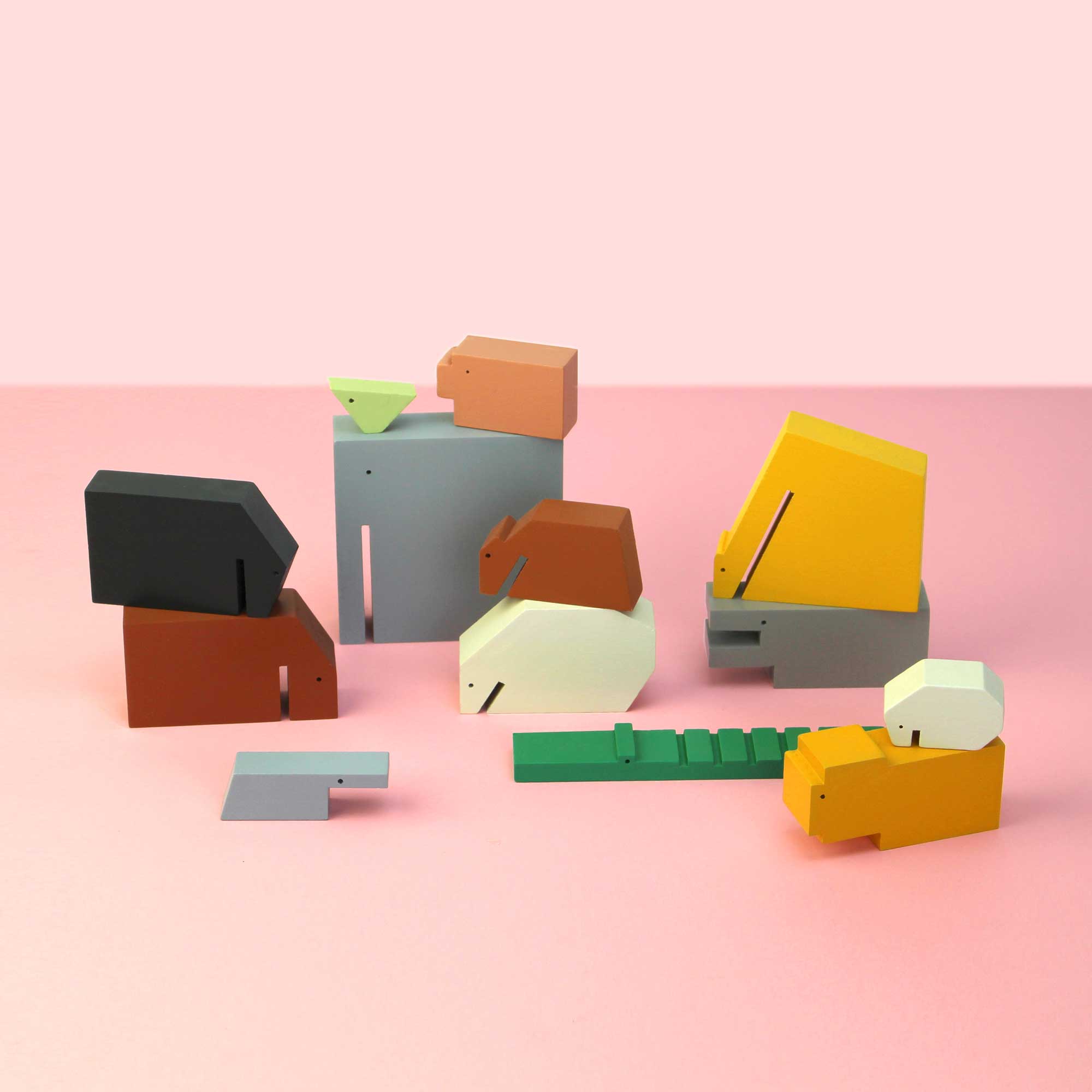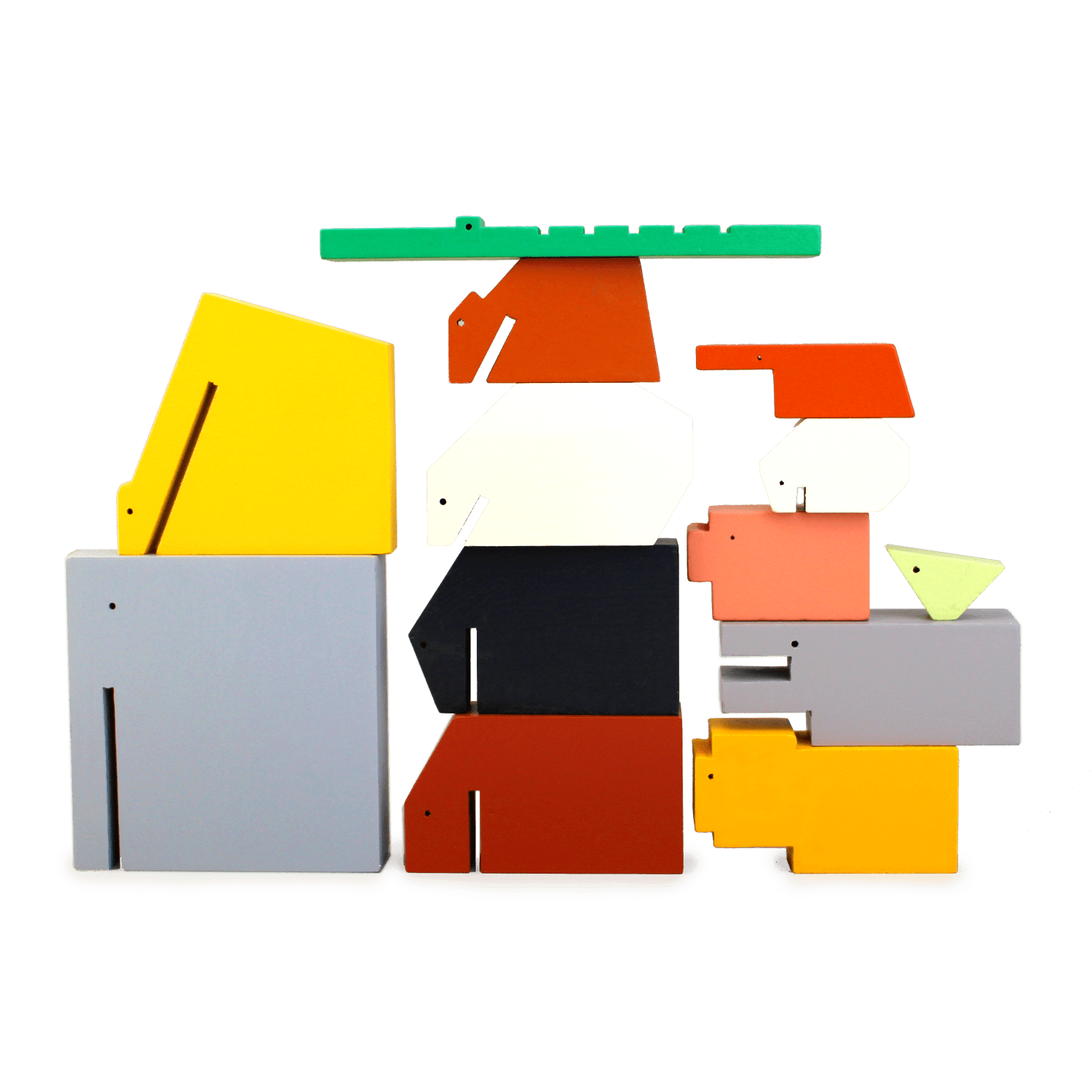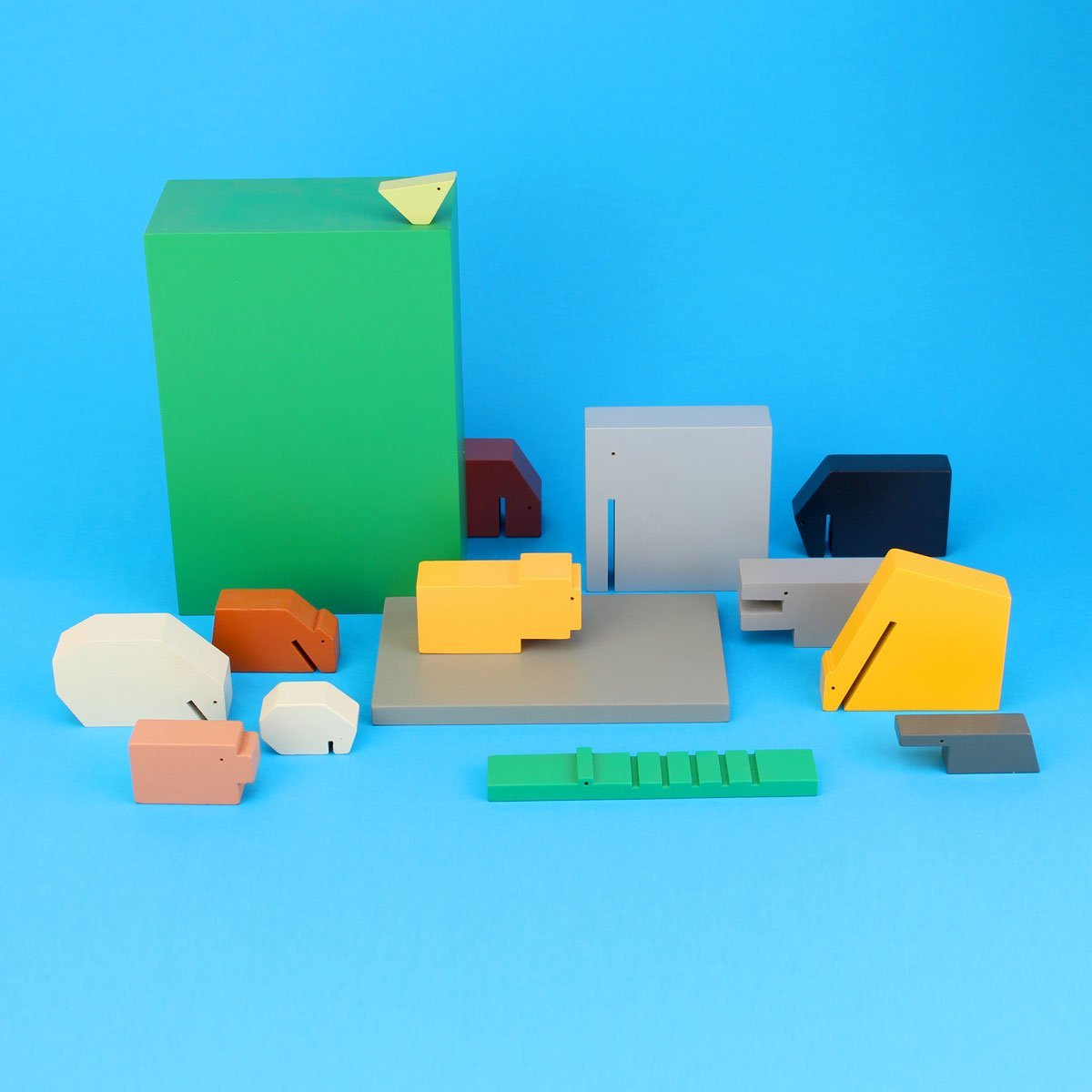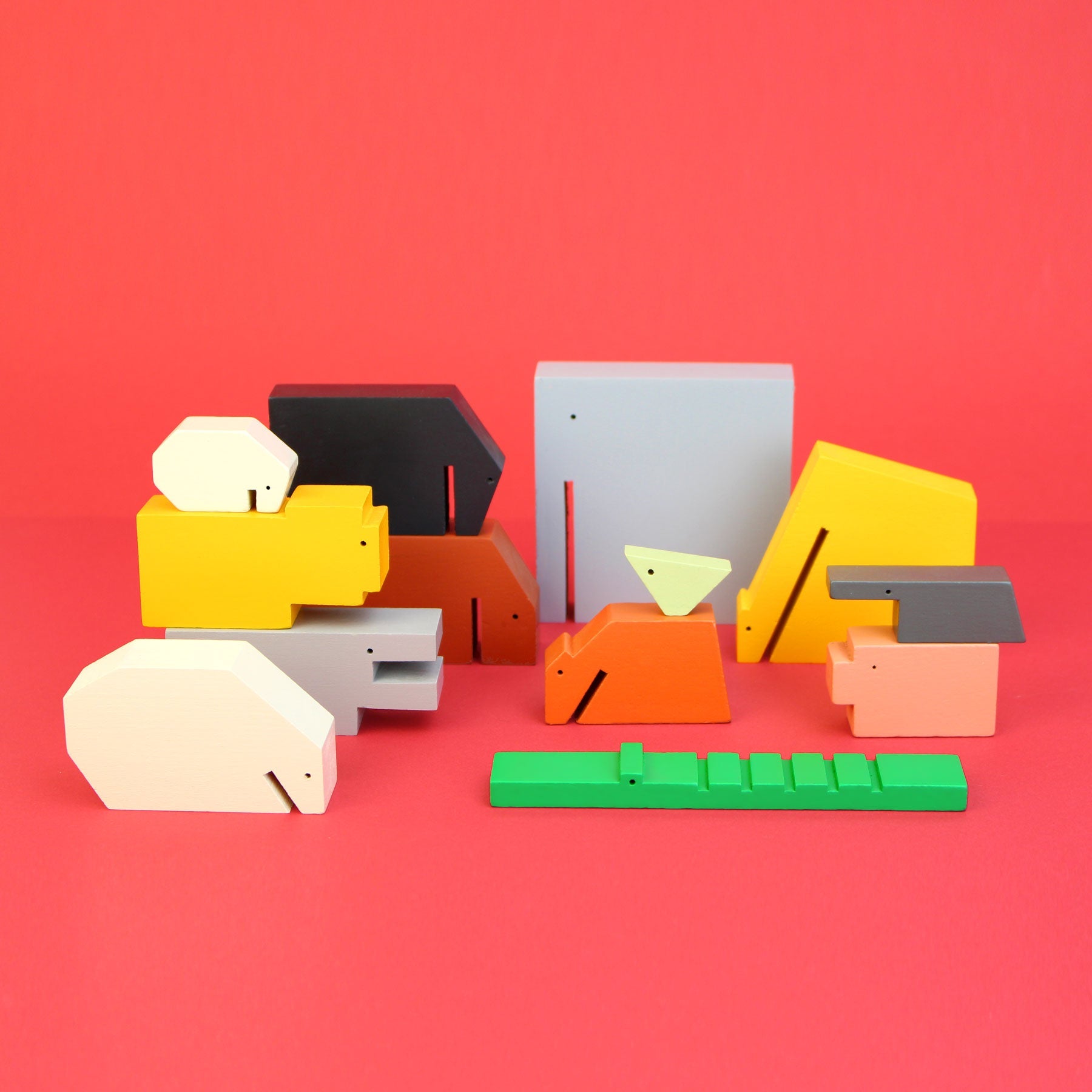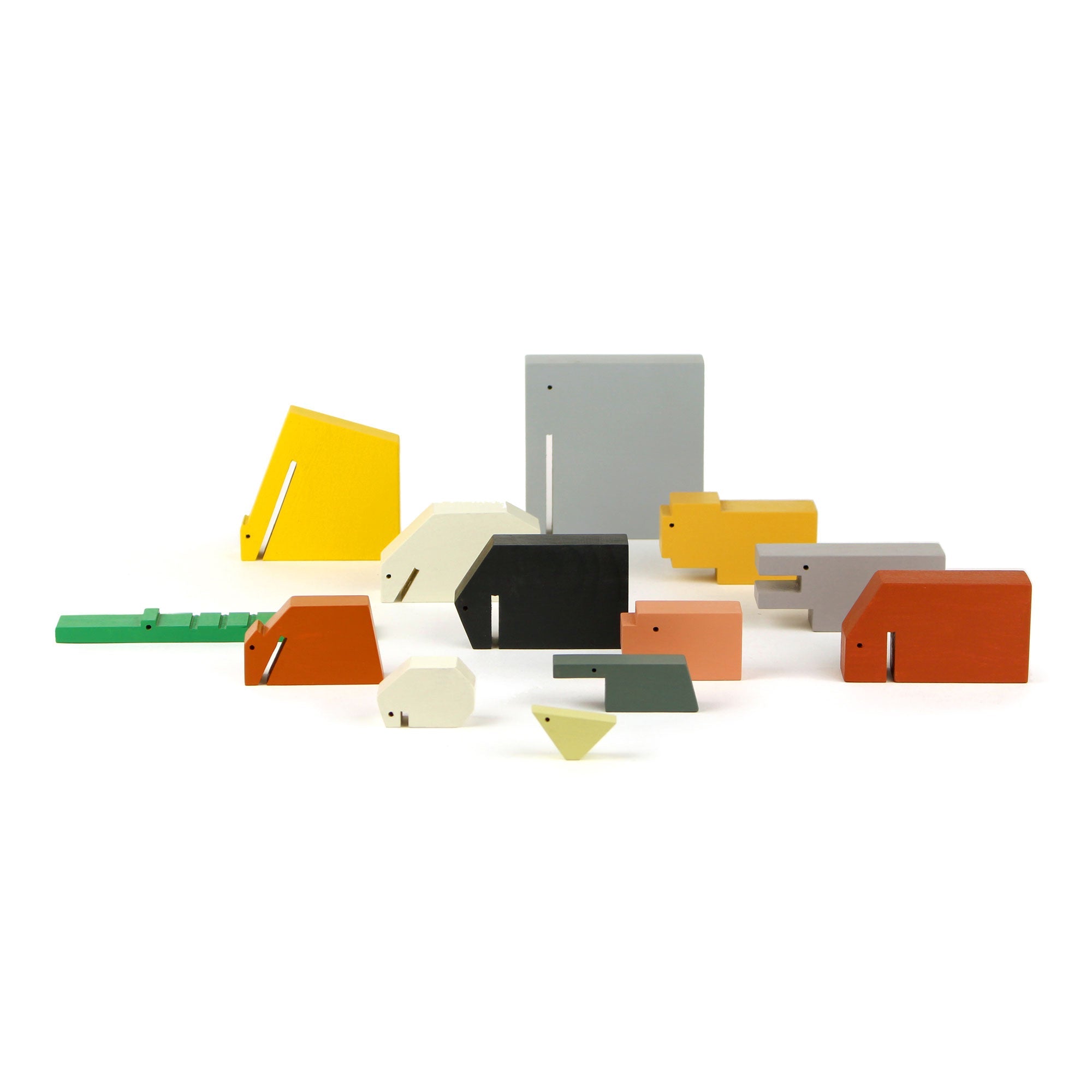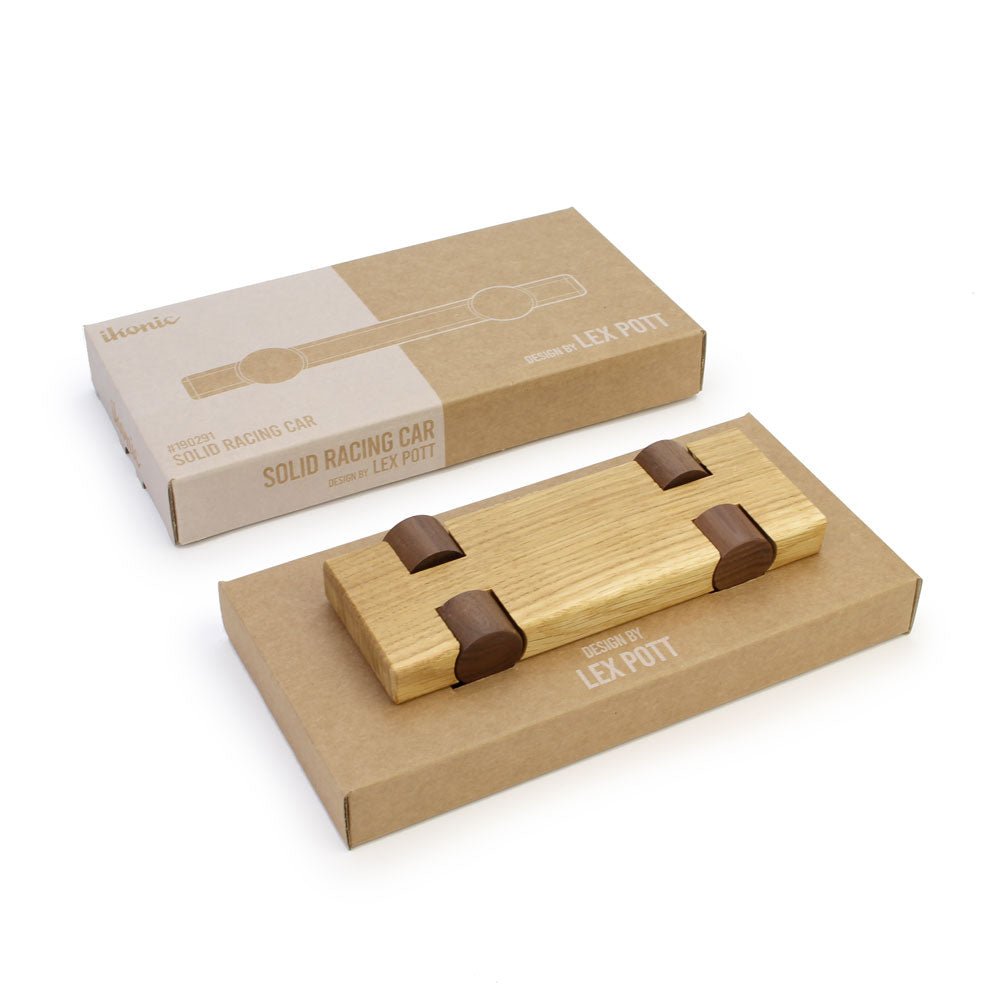
Floris Hovers Wooden Animals
Floris Hovers Wooden Animals
In stock
Wooden Animal Set, 13 pieces
The well-known wooden animals in a new, contemporary design. Designer Floris Hovers (1976) has designed this series of modern, minimalist wooden animals. The series consists of 13 stylized farm and zoo animals, and bears the characteristic signature of Floris Hovers. The shapes of the wooden animals have been reduced to the absolute essence, and the combination with the strong use of color results in a powerful composition for which the designer is known.
Material: beech wood
Packaging: gift box
Size indication:
- crocodile: 140 x 24 x 8 mm
- elephant: 90 x 24 x 90 mm
- giraffe: 79 x 19 x 74 mm
- hippopotamus: 85 x 24 x 36 mm
This contemporary, colorful wooden animal set fits perfectly in the modern children's room or interior. Playable Dutch Design, the wooden animals are not only fun to play with, they are also an asset to the interior. The modern wooden animals are packed in a beautiful gift box.
This special set is a real collector's item for art and design lovers, but is also certainly suitable as a special gift. Suitable for everyone aged 3 years and older. This beechwood toy set meets all European toy safety requirements .
Specifications
Specifications
Article No.: 190202
Barcode: 8719128270562
HS Code: 950300
Material: Beechwood
Product Dimensions: Various
Packaging Dimensions: 35 x 35 x 3 cm
Made in China
Product Safety:
Small Parts, not suitable for children under 3 years of age
Complies with: CE, EN71-1, EN-71-2, EN71-3, EN71-6, EN71-9
Shipping information
Shipping information
The Netherlands:
- usually the order will arrive the next working day
- Free shipping from € 35,- below: € 6,95
Belgium:
- usually the order will arrive within 2 working days
- Free shipping from € 50,- below: €11,95
France, Luxembourg:
- généralement la commande arrivera dans les 2 jours ouvrables
- Expédition gratuite à partir de € 75,- en dessous : € 19,-
Deutschland:
- In der Regel trifft die Bestellung innerhalb von 2 Werktagen ein
- Kostenloser Versand ab € 50,- darunter: € 12,-
Italy, Spain:
- usually the order will arrive within 3-4 working days
- Free shipping from € 75, below: € 19,-
United Kingdom, USA & other Non-EU countries:
- Shipping costs are calculated in the checkout, according to the weight of the shipment. More price information can be found in the bottom of this page under “Shipping and Returns”. We always apply the costs as calculated by our shippers. We ship from the Netherlands.
- For a durable and cheaper solution, you can also purchase the product from a shop near you . Please use the Store Locator to find a store near you.
For all other countries: shipping will be calculated at the checkout.
Share this product
Wooden Animals
Wooden animal figures, from the chicken to the stately elephant, and from farm animals to wild forest animals have become an indispensable part of the children's play and learning landscape. They are popular as toys and collector's items, and are praised as a sustainable alternative to plastic toys. But what makes wooden animals so special? And what questions are there about wooden animal figures and sets? Find out what to look for when choosing wooden animal toys, and why wooden animal toys are such a valuable addition for children.
What are wooden animal figures and who uses them?
Wooden animal figures are detailed, often hand-made wooden miniatures of animals. They range from simply stylized Waldorf figures to faithfully painted farm animals and wild animals. The toys are intended for preschoolers and children, but are also widely used in schools (including Montessori, Waldorf/Waldorf School) and in childcare because of the open-ended play options and the pedagogical value. Adults also appreciate wooden animals as a collector's item or for decoration. You also see more and more wooden animals in therapeutic settings, such as play therapy, because they help children express emotions and process experiences through role-play.
Why are wooden toy animals so popular?
The popularity of wooden animals stems from several aspects:
- Durability: Wood is sturdy, lasts for years and is environmentally friendly. Many wooden animal figures are made of FSC-certified wood and can last for generations with good maintenance.
- Safety: Most wooden animals are free of harmful substances, are safely rounded and are often CE-approved. Unlike plastic toys, wooden animal figures usually do not contain small or breakable parts.
- Pedagogical value: Wooden toys stimulate imagination, motor skills, problem-solving ability and sensory perception. Children learn the difference between various materials through touch and develop their fine motor skills when picking up, stacking and sorting the wooden animals.
- Aesthetics: Wooden animals fit nicely in any interior thanks to their soothing colors and natural materials. They add a warm and authentic look to the children's or playroom.
- Collecting and playing fun: Children can collect animals, role-play, make up stories or re-enact themes (farm, forest, jungle). They are also used for educational play, such as learning to recognize animals, sorting species and stimulating free creation.
- Open end: Wooden animals are open-ended toys: they do not invite one specific purpose, but rather stimulate the creative and narrative power of children.
The development of wooden animal toys: a little history
Wooden toy animals have their origins in ancient craft cultures around the world. In Europe, figures made of wood appeared on a large scale as toys as early as the nineteenth century. Around 1900, the first industrial production of wooden animal figures was started in Germany, Austria and Switzerland. With the rise of Waldorf education in the twenties of the 20th century, the demand for high-quality, traditional wooden toys grew, in which form, material and simplicity were central. Nowadays, wooden animals are appreciated worldwide and there are many local and international producers. The growing focus on sustainability and conscious parenting has only reinforced this trend in recent decades.
Are wooden critters durable and safe for children?
Sustainable wooden toys are often made from FSC-certified wood (from responsibly managed forests). This means that for every tree felled, a new tree is planted, preserving the forest for future generations. Most European Quality Brands work with natural oils, wax and water-based paints, making wooden animals safe and environmentally friendly. Wooden animals also last for generations, can be passed on, and have a significantly lower impact on the environment than plastic toys. According to research by the NVWA (2023), 84% of the wooden toys examined meet European safety requirements. It is important to pay attention to CE marking, EN71 standards (European) and an FSC quality mark, which indicates that the wood has been sustainably sourced. Check the toy for sharp edges, splinters, loose parts. Repair is often easier compared to plastic toys: a loose leg can be reattached with wood glue.
Sustainability & ecological impact in numbers
Figures show that wooden toys, if sourced from sustainably managed forests, have a much smaller carbon footprint than plastic toys. FSC-certified toys mean that forests are replenished for every tree felled, so that the forest is preserved. Wooden animals last an average of 10 years or more and are practically completely recyclable. The share of safe, tested wooden toys is at least 84% according to the NVWA.
According to WWF, millions of tons of plastic waste are produced worldwide every year, much of which comes from the toy industry. By choosing wooden animal toys, you contribute to reducing this mountain of waste! In addition, wooden critters are often wrapped in cardboard instead of plastic, which reduces the impact even further.
Wooden animal figures in comparison: Wood vs. plastic and other materials
Although plastic toys may seem cheaper to buy, wooden toys have a longer lifespan and ecological added value. Wood is a renewable raw material, while plastic comes from fossil fuels. Recycling plastic remains difficult; Wooden animals can be more easily reused or composted at the end of their lifespan. Studies show that wooden toy animals are less likely to break, less likely to disappear into the trash and more often pass from generation to generation as heirloom or collectible. In addition, parents and children often experience wooden animal sets as more soothing, warmer and more valuable to play with and grow up.
Wooden animal figures have left a huge mark on modern play, precisely because of their simplicity, durability, safety and open play value. They stimulate imagination, creativity and sensory development, and because of their purchase price they are less of a disposable item but rather an investment in years of fun. When buying, pay particular attention to quality marks, finish and age, then wooden toys are a safe, responsible choice to enjoy for generations. By choosing a quality wooden animal set or separate wooden animals, you contribute to a more sustainable, creative and safer play environment for children of all ages. Wooden animal toys are not only fun – they are a conscious choice for parents and children with an eye for quality, nature and development.
Frequently asked questions
From what age are wooden animals suitable as toys?
From what age are wooden animals suitable as toys?
This is one of the most frequently asked questions. Wooden animal figures can already be suitable for babies in the base, but always pay attention to the manufacturer's specific age recommendations. The wooden animals from Floris Hovers for IKONIC are suitable for children from 3 years old. This is because there are smaller animals in the set that can be a swallowing hazard.
By age category:
- Babies (0-1 years): Some wooden animals (e.g. teethers or rattles made of solid wood) are safe, as long as they do not contain small parts and are finished with natural, non-toxic oil or lacquer. Always check the minimum age stated on the packaging. Babies explore the world by putting toys in their mouths, so safe finishing is essential.
- Toddlers (1-3 years): Most wooden animals are suitable from 1 year, especially if they don't have sharp edges or small parts. Well-known brands such as Holztiger offer many animals that are safe to use from the age of 1. For this age group, it is important that the wooden toy animals are resistant to bumps and falling to the ground.
- Preschoolers (3+): Wooden animal figures are often labeled as 3+ because of small parts. Children from the age of 3 can usually play safely with almost all wooden animals, especially if they are supervised.
NOTE: For children under 3 years old, toys have stricter requirements: no small, loose parts, no toxic paints or varnishes, no splinters. Pay attention to CE marking and quality marks when purchasing wooden animal figures for young children.
What should you look for when buying wooden animal figures?
What should you look for when buying wooden animal figures?
A number of points are crucial when purchasing:
• Safety: Check for CE mark, EN71 standard, finish (rounded edges), no small parts for young children, no toxic substances (pay attention to quality marks).
• Origin and material: go for toys from Europe or from renowned brands; choose FSC-certified (or other sustainable) wood.
• Age indication: Always check the age guideline, especially for babies and toddlers. Take into account your child's motor skills when choosing the size and weight of the wooden animals.
• Quality of finish: Wooden animals should be well sanded, sturdy (not too thin) and provided with safe layers of paint or oil. Make sure that details are burnt in or painted so that they do not come off.
• Combination possibilities: Wooden animals can often be expanded into a real play world – farm, forest, landscape – with trees, houses and fences. Look for sets or individual figures that create new play worlds together. For large wooden animal sets, pay attention to the different types of animals and toy accessories that are included.
Are wooden toy animals better for development than plastic animals?
Are wooden toy animals better for development than plastic animals?
Wooden animals stimulate creativity, because they do not contain any sounds/lights and children have to come up with the game themselves. They are good for sensory development (difference in texture, weight), and strengthen fine motor skills (grasping, putting down, stacking). Research shows that open-ended toys, such as wooden animal figures, contribute to independence, problem-solving and social interaction. Plastic toys can have specific advantages in detail or functionality (for example, when they provide light or move), but wooden animals are perceived as more educational and soothing. They promote more initiative and are often played with more concentration. In addition, wooden creatures are usually more timeless and fit better with old-fashioned role play and free fantasy play than many mass-produced plastic products. And, in addition, the adults often find them more beautiful and fun than the animals made of plastic!
Are wooden animals safe?
Are wooden animals safe?
Yes, provided they comply with European safety standards (CE/EN71) and do not contain small parts or toxic substances. Always choose wooden animal toys from reliable brands and pay attention to quality marks.
What if my child does suck on the wooden animal?
Then the wooden animal must still be safe. Therefore, always check the finish, choose natural oil or paint, and only allow children to suck on wooden toy critters under supervision.
Why are wooden animals more expensive than plastic toys?
Why are wooden animals more expensive than plastic toys?
This is due to the use of high-quality wood, handicrafts, sustainable paint and environmentally conscious production. Wooden animals are often heavier, sturdier and are more often finished by hand. Usually the production numbers are also much lower, so the price is a bit higher.
Are wooden animals only fun for young children?
Are wooden animals only fun for young children?
Certainly not! Many schoolchildren and adults collect wooden animals or use them for decoration. Floris Hovers' animals in particular are often purchased by collectors and lovers of modern design.



